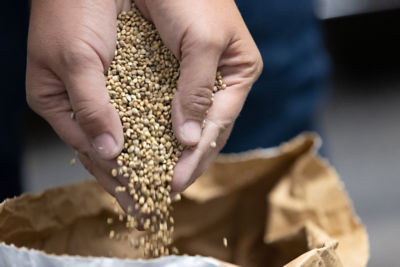Distribution
Worldwide
Symptoms
2, 4-D: Leaves become distorted and may curl downward. Stems and petioles may become flattened. Leaves often become fan-shaped and the major veins radiate from the leaf base.
Atrazine: Leaf tissue dies and plants may be stunted.
Bensulfuron-methyl: Plants develop severe stunting with reduced growth at the growing points.
Carfentrazone-ethyl: Young, expanding leaf tissue shows necrotic burn.
Chlorothalonil: Multiple applications can cause phytotoxicity on cucumber.
Clomazone: Leaves and growing tips in watermelon show a bleached appearance.
Flumioxazin: Squash leaves show yellow spotting to complete yellowing.
Glyphosate: Injury appears as a strong yellowing of newly emerged leaves and a yellowing of the center/base of older leaves. Upward curling of leaves and severe stunting may occur.
Halsulferon-methyl: Post-emergent injury can cause yellowing and crinkling of foliage.
MCPA: Fruit malformation and leaf distortion can occur. Double fruit are common.
Metribuzin: Foliar symptoms range from bronzing to bleached white necrosis of leaves.
Norflurazon: Foliage shows Iintense yellow vein banding. Symptoms occur more often when crops are grown in sandy soils.
Oxyfluoren: Cotyledons develop necrotic spots. Initial true leaves appear burned on squash.
Paraquat: This herbicide can create necrotic spots of relatively uniform color. The interface between the affected and healthy area of the leaf is usually distinct.
Pelargonic Acid: Damage on squash can cause leaf size reduction as well as distortion of the leaves.
Propanil: Melon expresses a necrotic burn on cotyledons and interveinal necrotic panels on leaves.
Sulfur: Symptoms include foliar burn and stunting of the plant.
Treflan: The lower portion of the stem enlarges and root growth is reduced. The plant is weak and stunted which may lead to plant collapse.
Triclopyr: Petioles and stems in melon and squash become twisted or cracked.
 Melon with 2,4-D injury. (Courtesy of Tom Isakeit)
Melon with 2,4-D injury. (Courtesy of Tom Isakeit)
Conditions for Development
Cantaloupe and squash are very sensitive to many pesticides. Sulfur, MCPA, and 2,4-D may drift from applied areas and affect unsprayed sensitive crops. Atrazine damage occurs when a sensitive cucurbit crop follows the previous season’s grain crop. Treflan residues from previous crops or improper application of Treflan for current crop can lead to damage.
Control
Apply pesticide(s) in accordance with label instructions. Be aware of potential pesticide residues when planning rotations. Avoid spraying on windy days. Avoid pesticide applications when plants are under water stress.




